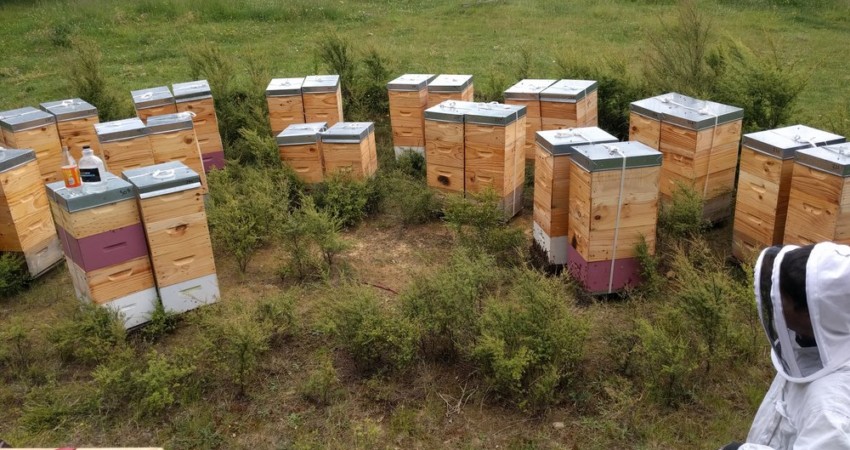

There are various types of bees which include the stingless bees, solitary bees, honey bees. Inorder to set up an Apiary, one needs to have knowledge of this information.
Honey Bees belong to the animal kingdom, Phylum Arthropoda, Order Hymenoptera, class Insecta, Super family Apoidea, family Apidae, genus Apis. The genus Apis is divided into several species and sub-species/races but the 5 main species are: Apis dorsata (the giant honeybee), Apis laboriosa (the darker giant honeybee), Apis florea (the dwarf honeybee), Apis cerana and Apis mellifera. Research needs to be done to ascertain the major species available in Uganda.
Honey bees are social insects that live in colonies of 10,000 to 60,000 bees. A colony consists of a queen (fertile female), a few hundred drones (males) and thousands of workers (sterile females). They pollinate flowering plants and crops. They also produce honey, beeswax and other bee products of very high economic value.
Queen bee
The Queen bee is a reproductive female. There is only one queen in the hive and her job is to lay eggs and produce queen substance (pheromones). When a new queen starts life, she mates only once with drones
outside the hive. A good queen lays between 1,500 – 2,000 eggs per day but after two years she lays fewer eggs. She lives for three to five years. It is very difficult to find the queen but she can be recognized by her long and slender body and short wings. She is fed by the young workers and is bigger than the other occupants due to massive feeding especially with royal jelly. She has a sting that is only used against rival queens. Her pheromones or scents serve to control the other bees and harmonize the colony’s behaviour. The Queen bee can be marked on the dorsal surface of the abdomen for easy identification and to avoid being crushed accidentally during hive manipulations.
Drones
The Drones are males and are bigger than the workers. They develop from unfertilized eggs and their major task is to mate with the queen. They are stingless, very large eyes which are used to spot the Queen during
mating. Drones look large and square and make a loud buzzing noise when they fly. Drones are dependent on the workers for food because their proboscis is short and cannot collect food for them. There can be
about 200 to 500 drones in a hive but in time of food shortage the workers chase the drones out of the hive to die. Their lifespan is usually not more than 2 months.
The Workers
Most of the bees in the hive are workers- they are all sterile females. The worker bees’ change tasks according to age. Young worker bees clean the hive, feed both young and the Queen and make the beeswax combs.
They control the temperature of the hive by flapping their wings and also guard the hive. Older workers scout for food and collect the pollen, nectar, water and propolis. They have a sting plus special glands and organs to help them to defend the colony against enemies. The workers are also responsible for the honey formation process. The lifespan of a worker bee is 7-8 weeks during the main flowering season when they work hard. They can live longer during dormant periods.
 Contact Jaguza Support
Contact Jaguza Support